THERE
AND HERE
Oil
Paintings of Australia, New Zealand and back in Britain
HILDA
MARGERY CLARKE
a follow-up to the 2004
show Here and There
(being the Northern half of her
round-the-world trip)
Sat 29 March – Sat
12 April 2008 now Extended to 20 April
Open Morning Sunday 13 April 11am – 2pm
Ring for an appointment at other times
In 2002, like Mole in The Wind in
the Willows, HILDA MARGERY CLARKE "threw down her whitewash
brush" and set off on a series of non-'package', and mostly
unaccompanied, journeys. An apparently prosaic start, three weeks in
Ramsgate – the Regency spa with its Victorian terraces,
harbours and sands – provided a lifetime's visual material, but
painting this was interrupted by taking in the complete Norwegian
Coastal Voyage, right up to the Russian Border. Her head now crammed
with images, she 'roughed in' numerous paintings, before three months
of travel in Australia and New Zealand, with a brief stopover in
Thailand. On her return, those 'outline' paintings provided the
basis of the first artistic travelogue, Here and There, shown
in 2004 ( see elsewhere on this
site).
HMC started painting seriously in 1947,
with private tuition in Hamburg and her native Manchester. In 1954,
newly married, she came to Southampton, her home ever since. (In
fact, long before it was a gallery, "The First" became her
first owned home, brand-new, in January 1955: one reason the
Clarkes so named the house). At the Art College (now absorbed into
Solent University) she studied life-drawing, sculpture and
printmaking, part-time, for nearly 30 years. Her subject matter
encompasses landscapes, the sea, incidents, but mostly (non-specific)
people. Humankind doing things – or just standing! – is
a particular favourite. She layers the paint slowly, usually thinly
by brush, sometimes finishing exuberantly with a palette-knife. In
order that they can dry thoroughly, she keeps about 30 pictures on
the go at once: some take years, even decades.
While completion may be lengthy,
commencement is swift. HMC almost never works on location: no
photos, few drawings — her strong visual memory for salient
points means quick 'reminder' pencil-strokes are all she needs.
VERY occasionally she'll use others' photos afterwards, as reminders
(or – even more rarely – inspiration) but many works
begin life as fleeting glimpses, burned into her mind with no other
record and worked into paintings in the studio. After 'laying-in'
paintings (without finishing) she can return to them, sometimes much
later. This process works best if started soon after the 'trigger'
image has been seen: already abstracted in her head, it is set down
unhesitatingly, without 'workings through' in the traditional
art-training sense.
Although technically skilful, HMC works
instinctively, believing that dedicated artists are humble mediums
for "things to flow through". Often she cannot forecast
how a piece will end up, like certain novelists who cast their
characters adrift and 'follow' where they lead: paintings are
complete only when nothing more need be added. Such assessing takes
time, so previous shows have happened only after the works were
ready.
Because Here and There, and its
content, had already been mooted, the works for it were completed
faster. As it turned out, a travel-exhibition covering all four
places (UK, Norway, Australia and New Zealand) would have overflowed:
with so much work unfinished (in fact most unstarted!), it was split
into two [fortuitous] hemispheres, hence the current show There
and Here.
Despite solo outings both locally and
further afield, and mixed shows countrywide – including London
– Hilda Margery Clarke is hardly what you'd call "established",
owning far more work than she's sold in the last 60 years. So why
keep doing it? Driven by a primal urge to paint, rather than to
sell, she won't compromise to satisfy any latest fashion. True art,
she believes, must be more than just decorative: it has to add
something worthwhile to all our experience (without being as 'heavy'
as perhaps that sounds!). But that principled approach normally
precludes wide audiences — unless one gets 'discovered' by the
market (which usually results in the above compromise!)
There and Here is planned to
comprise some 50 paintings, with further work unframed, all for sale:
a good opportunity to see the breadth of this largely unsung artist.
Some pictures of Ramsgate and Norway were not ready in time for the HERE AND THERE show, so are included now.
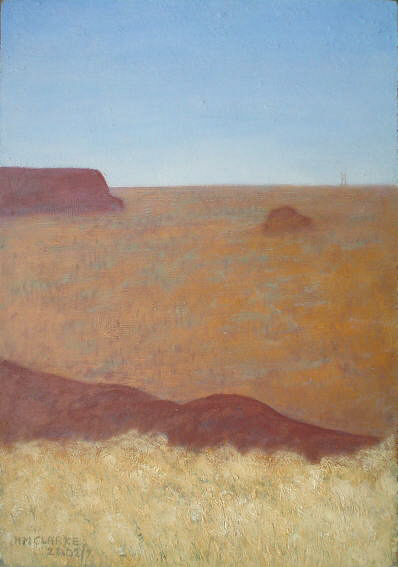
38 DISTANT MONOLITH 2002 – 07 532 x 379 | 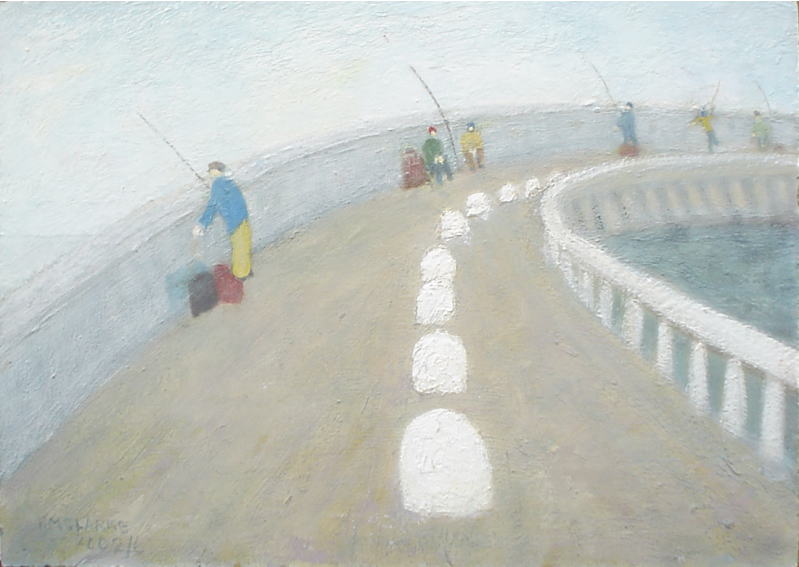 22 FISHERMEN ON THE PIER, RAMSGATE 2002 – 07 248 x 353 • |

25
YACHT BY QUEEN MARY 2 I 2006 250 x 289 [2 x smaller versions available]
Seen on a trip round Southampton Docks. | 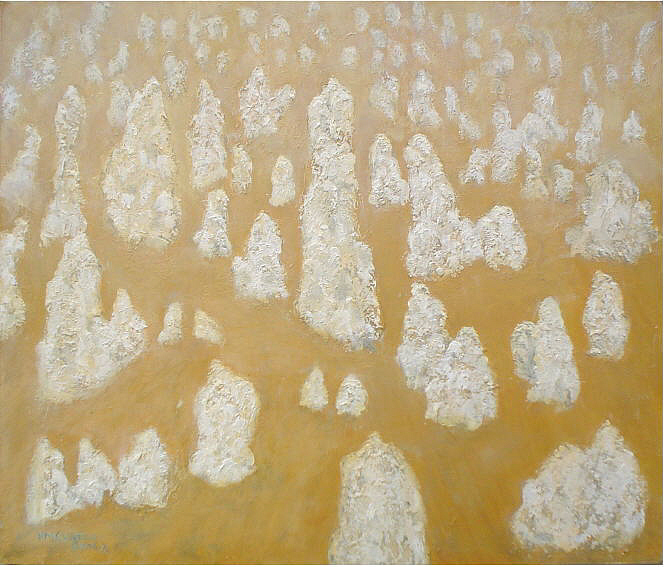 16 PINNACLES DESERT, W.A. 2006 – 08 519 x 613 |
 19 NORWEGIAN FUNFAIR 2002 – 07 909 x 866 | 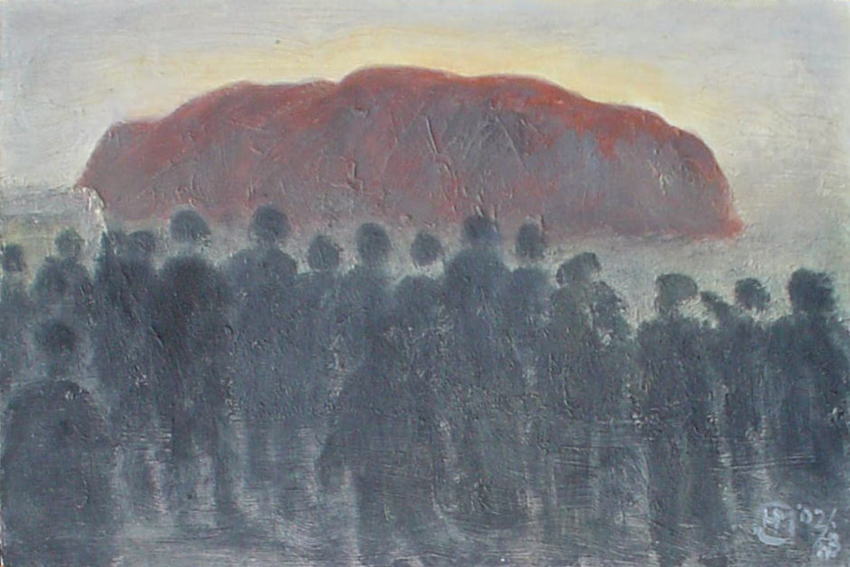 26 ULURU SUNRISE 2002 – 06 170 x 253 |
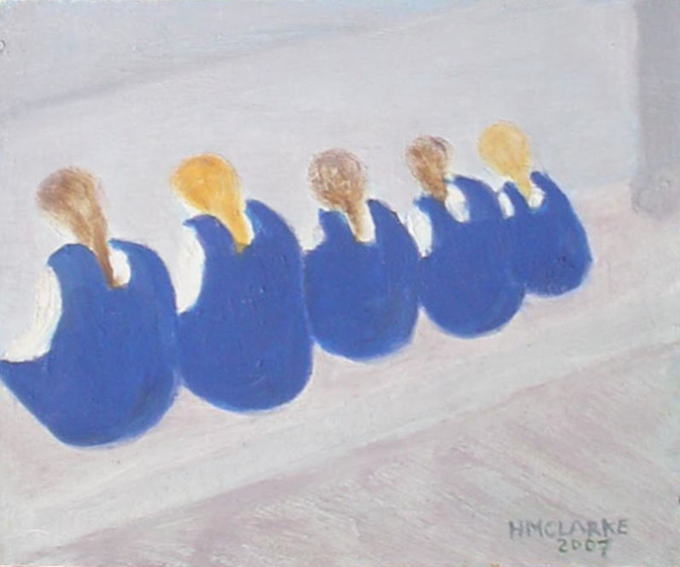
44 TROUPE RESTING, ALICE SPRINGS II 2007 164 x 198 [larger version available] | 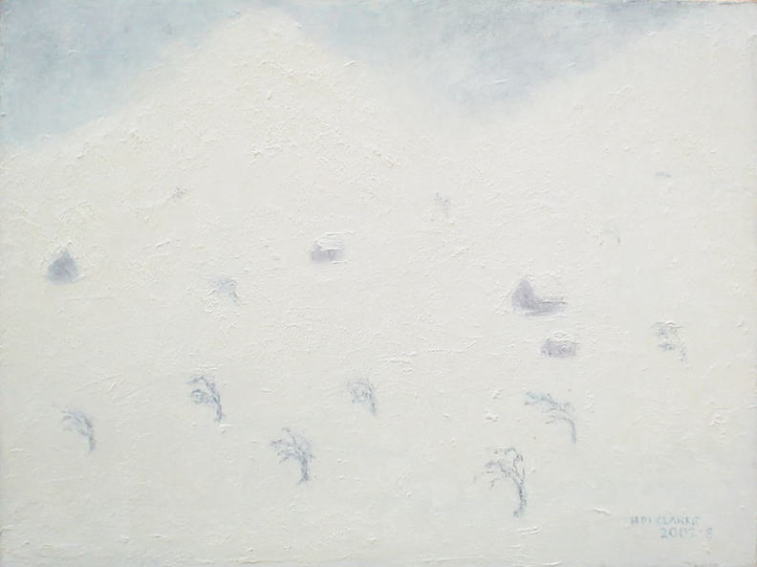 11 SUMMER HUTS IN SNOW, NORWAY 2002 – 08 296 x 399 |
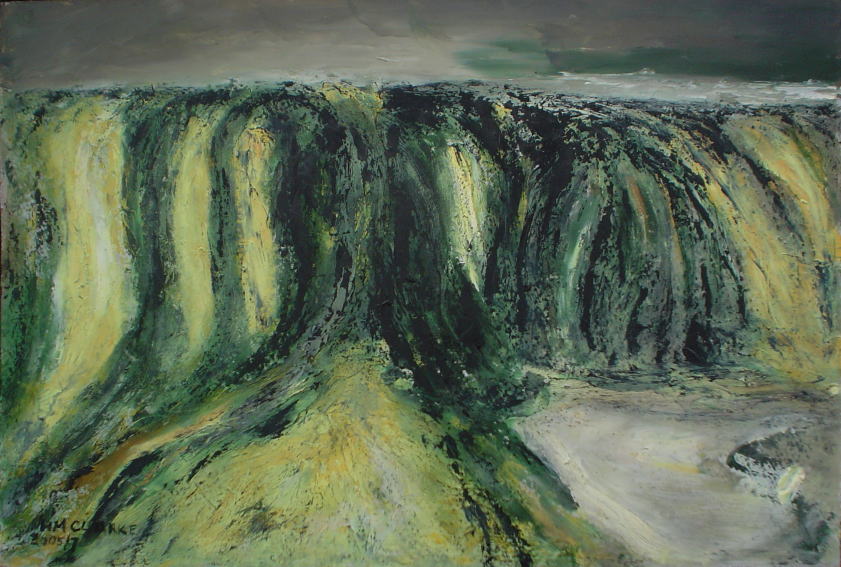
7 SINTER TERRACES, WARBRICK, WAIMANGU, NZ 408 x 598
Volcanic eruptions, boiling mud, steaming pools and spouting geysers are part of the continuous natural formation of the land. These terraces seem permanent but eventually could disappear in an upheaval similar to the one which destroyed the spectacular pink terraces (which I think were the largest in the world) with loss of lives and homes. Sinter is the incrusted deposit, on underlying rocks, of the chemicals suspended in mineral waters.
|








